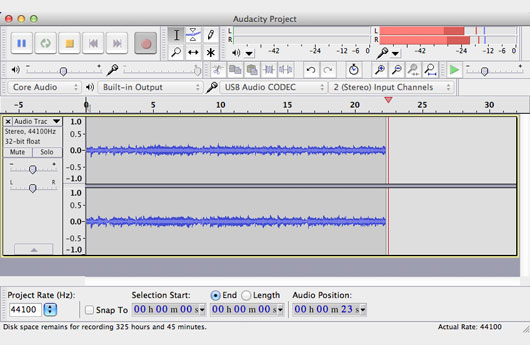

You can always amplify the recorded signal later if necessary.

The aim is to adjust levels so that the long red bars in Meter Toolbar don't exceed about -9.0 to –6.0 dB (or 0.5 if the meters are set to linear rather than dB). Choose "Start Monitoring" or "Stop Monitoring" as appropriate. Use the context menu by either left-clicking the downward-pointing arrow beside the microphone symbol or right-clicking over the recording meter.Left-click in the right-hand recording meter to turn monitoring on.There are two ways to turn monitoring on and off in Meter Toolbar: Step 3: Monitor and set initial sound levelsīefore recording for real, try to set sound levels by playing similar material from your intended source and monitoring it in Audacity, so that the input level will be neither too soft nor so loud as to risk clipping. You can also choose Transport > Software Playthrough (on/off) to conveniently toggle playthrough off and on as required. To turn off Software Playthrough, use the Recording page of Audacity Preferences: If playthrough is on, the sound card will try to play what it is recording then re-record it, creating an increasingly loud series of echoes that may damage your equipment.

Software Playthrough must be turned off when recording computer playback. Click the link to the tutorial for your operating system: This section of the tutorial shows how to find a suitable sound card input for recording computer playback, with workarounds if such an input is not available. Sometimes, older sound card drivers can be found on the web site of the sound card or motherboard manufacturer that still allow recording of computer playback. Many manufacturers are making it increasingly difficult to record streaming audio by deliberately removing or hiding this functionality due to copyright concerns. This is often the hardest part of the overall task, being dependent on your computer operating system and sound card. Step 1: Set up devices to capture computer playback


 0 kommentar(er)
0 kommentar(er)
